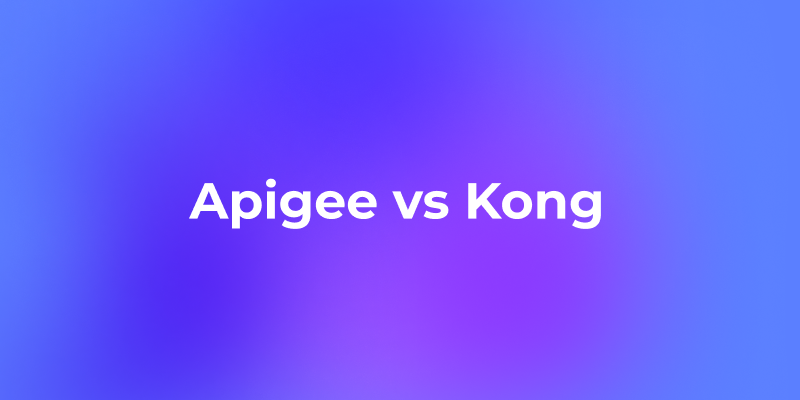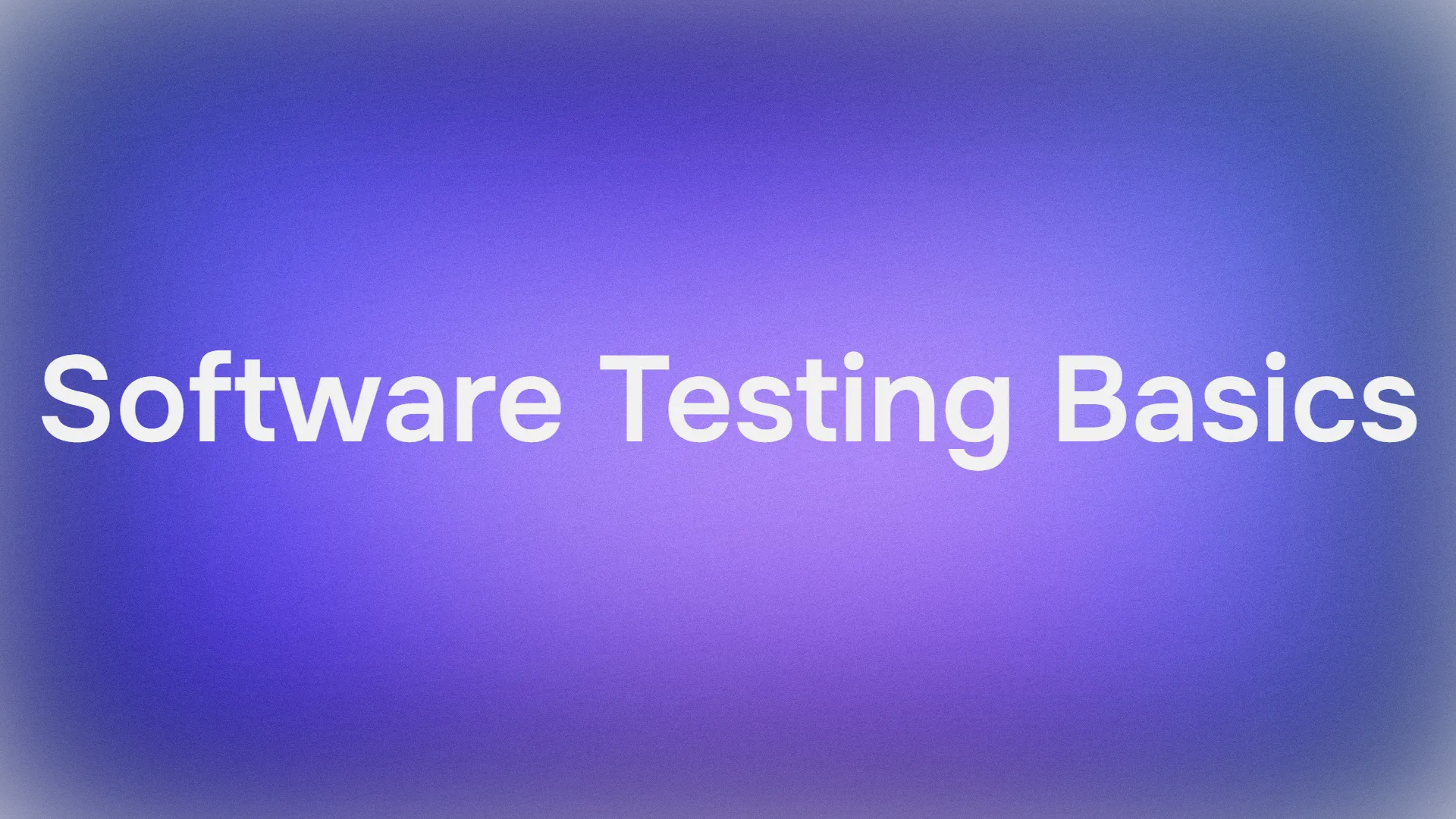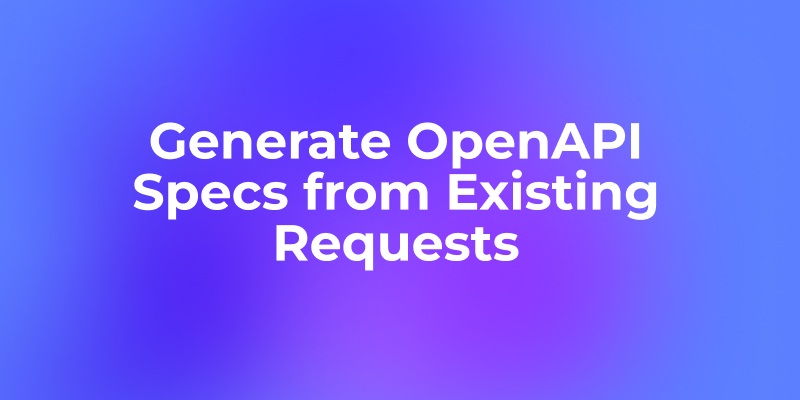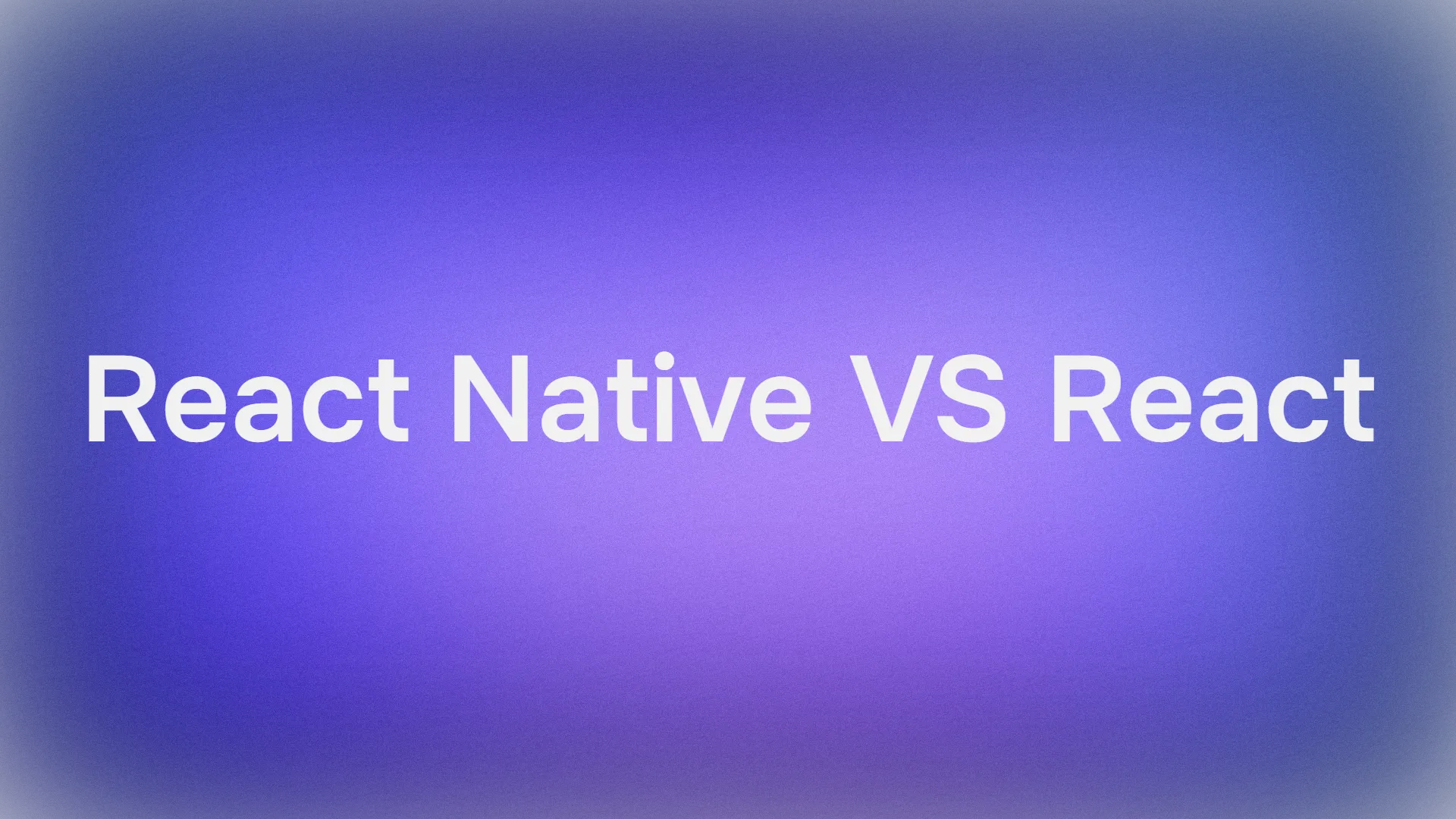In today’s API-driven world, selecting the right API gateway can significantly impact your application’s performance, security, and scalability. Among the many available solutions, Apigee and Kong stand out as two of the most popular and powerful API gateways.
But which one is right for your business?
In this comprehensive guide, we’ll compare Apigee vs Kong across critical aspects—architecture, features and more—to help you make an informed decision.
Want an integrated, All-in-One platform for your Developer Team to work together with maximum productivity?
Apidog delivers all your demands, and replaces Postman at a much more affordable price!
What is an API Gateway?
An API Gateway is a server that sits between client applications and backend services. It acts as a single entry point to manage, control, and route all incoming API requests. Instead of clients communicating directly with multiple services, they send requests to the API gateway, which then forwards those requests to the appropriate service.
Core Functions of an API Gateway:
- Request Routing: Directs API requests to the correct backend services.
- Authentication & Authorization: Verifies API keys, OAuth tokens, or other credentials.
- Rate Limiting & Throttling: Prevents abuse by limiting how many requests a user can make.
- Caching: Reduces load on backend services by storing common responses.
- Load Balancing: Distributes traffic evenly across backend servers.
- Monitoring & Logging: Tracks and logs request and error data for analysis.
- Request/Response Transformation: Modifies data formats, headers, or payloads as needed.
Why Use an API Gateway?
Without a gateway, managing direct communication between clients and microservices can become complex and insecure. An API gateway simplifies this by:
- Improving security through centralized access control.
- Enhancing performance with caching and rate-limiting.
- Simplifying architecture by handling multiple services behind one unified endpoint.
Now, let’s meet our two contenders.
Apigee: The Enterprise-Grade API Management Platform

Apigee acquired by Google in 2016, Google Cloud’s flagship, is an enterprise-grade API management platform with a rich feature set that includes API design, monetization, analytics, developer portals and security. Apigee is typically deployed as a SaaS solution (Apigee X) or as a hybrid model for sensitive environments.
In my experience, Apigee shines when you’re working in industries like banking, healthcare, or telecom where governance, compliance, and visibility are critical. It integrates deeply with Google Cloud but also supports hybrid deployments for teams with both on-prem and cloud components.
Apigee’s strengths include:
- A highly visual policy editor
- Advanced security (OAuth 2.0, SAML, JWT, etc.)
- API product and key management
- Developer portal for publishing APIs
- Real-time monitoring and analytics
However, the trade-off is complexity. Apigee is feature-rich, but that also means it takes time to learn and implement effectively. For smaller teams or startups, this could be overwhelming.
Kong: The Lightweight, Open-Source Powerhouse

Kong started as an open-source gateway and evolved into a full API and microservices management platform with a lightning-fast, lightweight core, flexible plugin architecture, and cloud-agnostic deployment options. Kong provides both a fully managed SaaS offering and data planes you can deploy anywhere.
Kong is built on NGINX. From the very beginning, Kong was optimized for performance, extensibility and container-native environments like Kubernetes. It has become the go-to API gateway for developers who want full control without being locked into a proprietary system.
Kong comes in two versions:
- Kong Gateway (OSS): The open-source edition
- Kong Konnect: The enterprise SaaS platform with additional features like a dev portal, service hub, and analytics
What is good about Kong is how easy it is to get started. You can spin it up locally or inside Kubernetes in minutes. The plugin architecture is a major selling point there’s a plugin for just about anything, and if there isn’t, you can write your own in Lua, Go, or Python.
Kong emphasizes performance, and it shows. It’s one of the fastest API gateways out there, which is why it’s so widely adopted in microservices architectures.
Apigee vs Kong: Feature Breakdown
| Feature | Apigee | Kong |
|---|---|---|
| Deployment Options | SaaS (Apigee X), Hybrid, Private Cloud | Fully managed SaaS, Hybrid, Self-managed |
| Open Source Core | No (proprietary platform) | Yes (open source Kong Gateway core) |
| API Protocol Support | REST, SOAP, GraphQL, gRPC | REST, gRPC, GraphQL |
| API Design & Lifecycle | Full-lifecycle management, monetization | Strong API lifecycle features, plugin extensibility |
| Developer Portal | Rich, customizable portals | Less emphasis, but improving via Kong Dev Portal |
| Analytics & Monitoring | Advanced, real-time, AI-driven insights | Good analytics, less mature than Apigee |
| Security Features | Enterprise-grade, OAuth2, JWT, encryption | Flexible plugin-based security, strong auth support |
| Scalability & Performance | Designed for large enterprise scale, scalable | High-performance, lightweight, low latency |
| Cloud & Hybrid Support | Multi-cloud, hybrid with Google Cloud integration | Cloud-agnostic, supports multi-cloud & hybrid |
| Extensibility | Policy-driven with scripting | Plugin architecture in multiple languages (Lua, Go, JS) |
| Ease of Use | Steeper learning curve for configuration | Easier to get started, especially with open source core |
| Pricing | Subscription, enterprise-focused and can be costly | Flexible pricing, more cost-effective for smaller teams |
| Ecosystem & Community | Enterprise-grade support and Google Cloud ecosystem | Vibrant open source community, strong ecosystem |
How to Decide between Apigee and Kong
When to choose Apigee:
- Working with regulated enterprises requiring advanced security, compliance, and governance.
- Monetizing APIs or managing complex partner ecosystems is critical.
- Wants robust analytics with AI-driven predictive insights to optimize API traffic.
- Deployment in hybrid/multi-cloud Google environments is a plus.
- Need a polished, enterprise-ready developer portal to onboard thousands of third-party developers.
When to go with Kong:
- Value open-source flexibility and want to avoid vendor lock-in.
- Many teams prefer lightweight, performant gateways with plugin extensibility (in Lua, Go, or JS).
- Cloud-agnostic deployment and multi-cloud strategies are top priorities.
- Need a platform that's easier to get started with and integrate into modern microservices architectures.
- Cost-effectiveness and managing internal APIs at scale matter more than some enterprise bells and whistles.
Developer Experience
Apigee offers a polished UI with lots of options. It feels like a control center where you can manage the entire lifecycle of an API. But it’s also heavy. For someone new to the platform, there’s a lot to absorb.
Kong, especially the OSS version, is refreshingly minimal. You configure everything via YAML or its Admin API. It integrates naturally into CI/CD pipelines, and its command-line friendliness makes it ideal for teams that live in GitOps workflows.
Verdict: For ease of use and speed, Kong wins. For enterprise structure and visibility, Apigee wins.
Why Use Apidog alongside Apigee and Kong
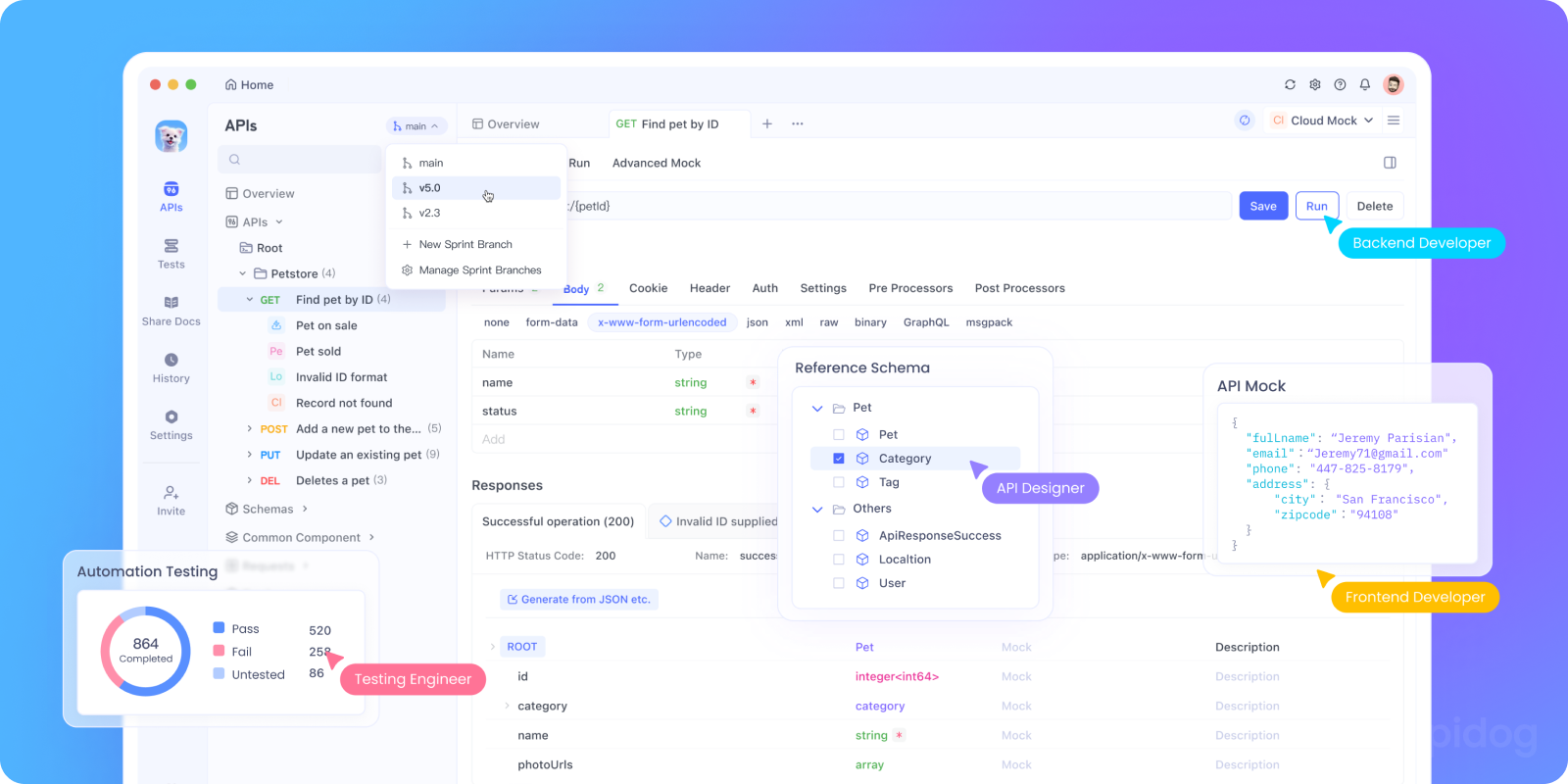
Both Apigee and Kong cover API gateway and management needs well, but you need a platform that streamlines everyday API workflows across design, testing, mocking, debugging, and documentation without switching tools.
Apidog is one such tool, a user-friendly platform that complements both gateways by simplifying API design, testing, mocking, debugging, and documentation all in one visual, no-code interface. Using Apidog saves countless hours, especially when working across teams that need to sync quickly.
Why Apidog can be an essential part of your toolkit:
- Unified API lifecycle platform: Design, test, document, and monitor your APIs alongside your gateway management no complex setups.
- Mock APIs and simulate traffic: With Apidog, frontend and QA teams don’t have to wait for backend implementations. They can mock APIs easily in one minute.
- Collaborative API specs: Share API definitions and workflows with your whole team to reduce miscommunication.
- And more...
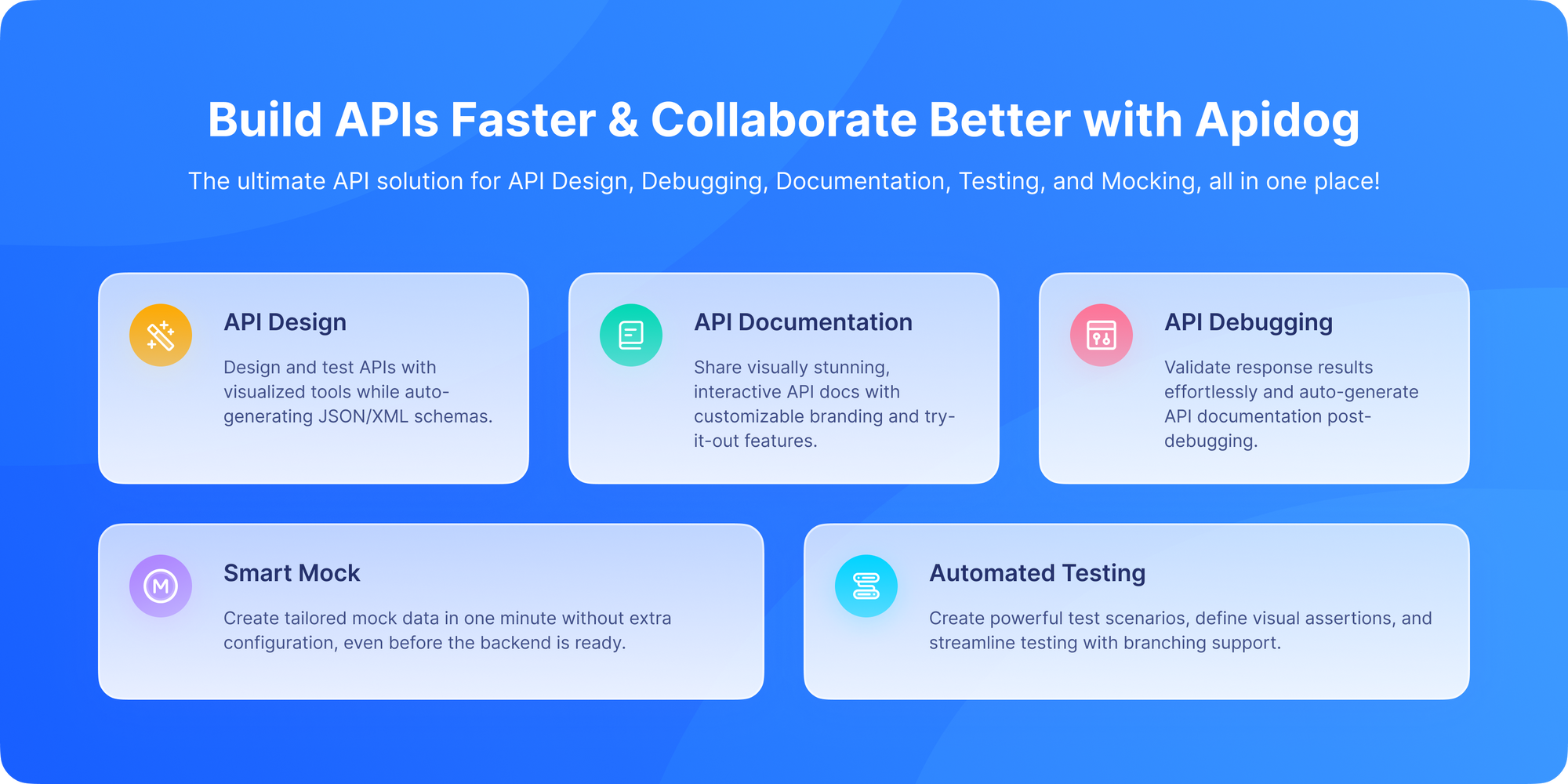
How to Set up Apigee or Kong with Apidog in Dev Workflow
- Start with designing your API specs in Apidog or import existing OpenAPI/Swagger files.
- Mock and test your APIs inside Apidog to validate endpoints independently.
- Deploy your gateway on Apigee or Kong.
- Use Apidog monitoring dashboards for performance and error tracking across your live APIs.
- Collaborate and share API documentation with your teams and partners directly through Apidog.
This approach slashes time-to-market and reduces troubleshooting headaches.
The Final Verdict
Both Apigee and Kong are excellent choices but they serve different needs.
Apigee is the heavyweight champion for large enterprises that need feature-rich API management, governance, and monetization baked in. Kong is the nimble challenger perfect for teams wanting open source flexibility, performance, and broad deployment options without vendor lock-in.
In my opinion, there’s no universal winner. It depends entirely on your team size, architecture, and long-term goals.
But no matter which gateway you pick, Apidog helps streamline API lifecycle management, bridging design, testing, documentation, and deployment in one place. Give it a try to see how it can simplify your API projects.
